
The Hawker Siddeley Nimrod is a retired maritime patrol aircraft developed and operated by the United Kingdom. It was an extensive modification of the de Havilland Comet, the world's first operational jet airliner. It was originally designed by de Havilland's successor firm, Hawker Siddeley; further development and maintenance work was undertaken by Hawker Siddeley's own successor companies, British Aerospace and, later, BAE Systems.

Apocalyptic and post-apocalyptic fiction is a subgenre of science fiction in which the Earth's civilization is collapsing or has collapsed. The apocalypse event may be climatic, such as runaway climate change; astronomical, such as an impact event; destructive, such as nuclear holocaust or resource depletion; medical, such as a pandemic, whether natural or human-caused; end time, such as the Last Judgment, Second Coming or Ragnarök; or any other scenario in which the outcome is apocalyptic, such as a zombie apocalypse, cybernetic revolt, technological singularity, dysgenics or alien invasion.
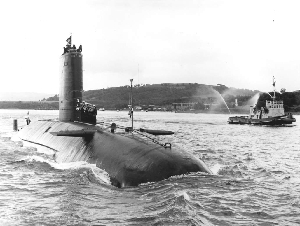
HMS Conqueror was a British Churchill-class nuclear-powered fleet submarine which served in the Royal Navy from 1971 to 1990. She was the third submarine of her class, following the earlier Churchill and Courageous, all designed to face the Soviet threat at sea. She was built by Cammell Laird at Birkenhead.
CaptainShane Michael Schofield, callsign Scarecrow, United States Marine Corps, is a fictional character, whose exploits form the basis of a series created by the Australian author Matthew Reilly. He appears in Ice Station (1998), Area 7 (2001), Scarecrow (2003), The Four Legendary Kingdoms, and the spin-off Hell Island (2005). While the plot differs from novel to novel, it is mainly based around Schofield's legendary reputation as a strong Marine, revered by the Marines that serve under his command, and is known for his high-risk tactical manoeuvres.
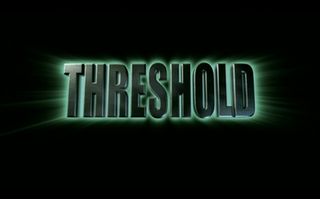
Threshold is an American science fiction drama television series that ran on CBS from September 16 to November 22, 2005. Produced by Brannon Braga, David S. Goyer and David Heyman, the series focuses on a secret government project investigating the first contact with an extraterrestrial species.

Nuclear weapons delivery is the technology and systems used to place a nuclear weapon at the position of detonation, on or near its target. Several methods have been developed to carry out this task.
"The Survivor" is the sixth episode of the first season of the American animated science fiction television series Star Trek: The Animated Series. It first aired on NBC on October 13, 1973, and was written by James Schmerer and directed by Hal Sutherland. Schmerer pitched an idea for an episode to producer D.C. Fontana called "The Chameleon", and together with the series creator Gene Roddenberry, it was developed into the final script.

Def-Con 4 is a 1985 Canadian post-apocalyptic film, portraying three astronauts who survive World War III aboard a space station and return to Earth to find greatly changed circumstances. The film's title refers to the Defense Readiness Condition (DEFCON), the United States military's nuclear alert system.

Skynet is an artificial neural network-based conscious group mind and artificial general superintelligence system that serves as the antagonistic force of the Terminator franchise.

Webs is a 2003 science fiction-horror television film directed by David Wu and starring Richard Grieco, Colin Fox and Kate Greenhouse. Produced by the Sci-Fi Channel, it was filmed in Toronto, Ontario, Canada.

Cheget is a "nuclear briefcase" and a part of the automatic system for the command and control of Russia's Strategic Nuclear Forces (SNF) named Kazbek. From when it was first developed, a "nuclear suitcase" has been available to the Russian head of state, Minister of Defense and the head of the General Staff.
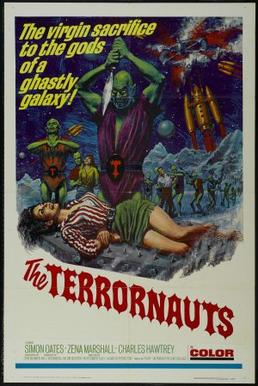
The Terrornauts is a 1967 British science fiction film directed by Montgomery Tully and starring Simon Oates and Zena Marshall. It was produced by Amicus Productions and based on the 1960 novel The Wailing Asteroid by Murray Leinster, adapted for screen by John Brunner. Space scientists foil an alien invasion of Earth.
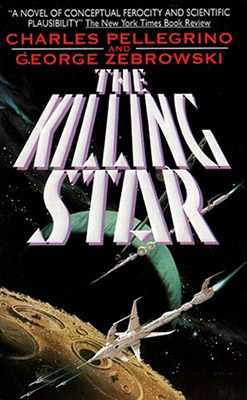
The Killing Star is a hard science fiction novel by American writers Charles R. Pellegrino and George Zebrowski, published in April 1995. It chronicles a sudden alien invasion in a late 21st century technological utopia, while covering several other speculative fiction ideas such as sublight interstellar travel, genetic cloning, virtual reality, advanced robotics, etc.
IF2: Interceptor Force 2, commonly called Interceptor Force 2, is a 2002 Sci Fi Pictures science-fiction TV movie on the Sci Fi Channel. A sequel to the 1999 Sci Fi Channel telefilm Interceptor Force, it is directed by Phillip Roth, and stars Olivier Gruner, Roger R. Cross, Adrienne Wilkinson, Elizabeth Gracen and Nigel Bennett. Government-trained soldiers called the Interceptors are assigned to look at a crash site of an alien spacecraft in Russia where they find a 7-foot-tall (2.1 m) alien that can change shape.

The Colonists are an extraterrestrial species and are also the primary group of antagonists in the science fiction television show The X-Files as well as the first X-Files feature film. The mystery revolving around their identity and purpose is slowly revealed across the course of the series. In the series' plot, the Colonists are collaborating with a group of United States government officials known as the Syndicate in a plan to colonize the Earth, hence their name.

Spiders is a 2013 American 3D science fiction monster horror film directed by Tibor Takács. The film was released on February 8, 2013.
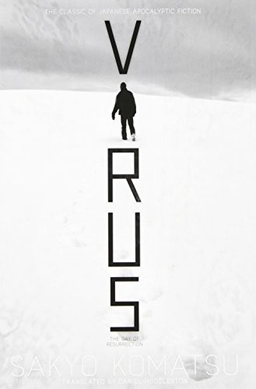
Virus, literally Day of Resurrection is a 1964 post-apocalyptic science fiction novel written by Sakyo Komatsu. The novel was adapted into a movie of the same name in 1980.
Biological warfare (BW)—also known as bacteriological warfare, or germ warfare—has had a presence in popular culture for over 100 years. Public interest in it became intense during the Cold War, especially the 1960s and '70s, and continues unabated. This article comprises a list of popular culture works referencing BW or bioterrorism, but not those pertaining to natural, or unintentional, epidemics.














